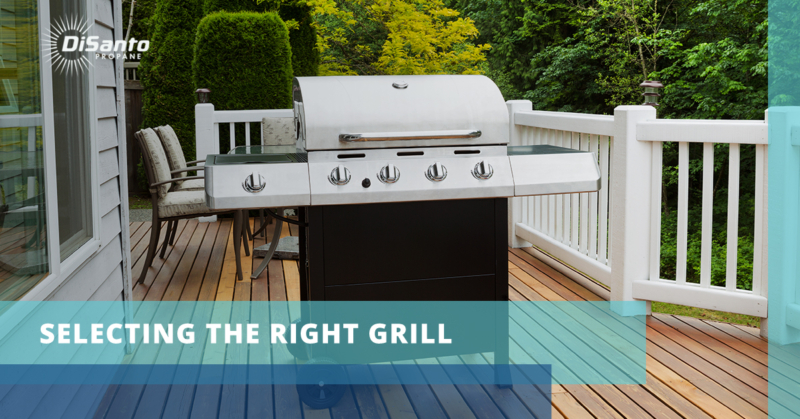In today’s post, we are going to continue with this grilling basics theme we’ve got going on here. Yes, we know that we’ve been offering up some of our favorite grilling recipes for a considerable amount of time now. So we figured it would be a good idea to go back to some fundamentals. After all, all the delicious grilling recipes in the world aren’t going to do you much good if you can’t figure out how to sear or lightly cook scallops to perfection.
That being said, let’s dive in. Keep reading if you’d like DiSanto Propane’s guidance for selecting the right kind of gas grill!
Finding a grill that is hot enough to get a sear on a tenderloin but is delicate enough to keep a heat that is low enough to warm (but not cook all the way through) a steak of tuna or a strip of rare steak is key to finding the proper balance. With charcoal grills, this is next to impossible (which is why they are comparatively cheap). With gas grills, you have flexibility.
Not all grills are created equally, as sad as it is to say. However, a significant strength of gas grills is that you can be more precise than other grill types. Thus, the main thing you want to worry about is finding a grill that has a high heat output. They can get expensive, but hey, what are you gonna do. A lot of things in life are expensive. But very few things in life are as pleasing as a perfectly seared filet mignon. We leave the choice to you.
Essentially, our advice is to invest as much as you want to or can, especially if you plan on searing meats often.
How Big Of A Grill Do You Need?
Again, price comes into play. If you plan on being Joe or Jane Cool, hosting a cookout every other weekend and whatnot, or if you have a large family for that matter, it’s not the most enlightening piece of advice to tell you that you’ll need a big grill. 800 inches or more is should do you well.
If you are only planning on grilling for your smaller family, say two to four people, you’ll probably be fine with a modestly-sized grill. 400 inches is a good ballpark estimate.
Consider Grill Grates
You want to take into account the materials used to craft the grill, in addition to heat output and size. The most common grate types are porcelain, stainless steel, and cast iron.
- Cast iron is pretty great, but you’ll need to be vigilant about cleaning that sucker, otherwise it’ll rust and you’ll be unhappy and without a decent grill.
- Stainless steel grates are a breeze to clean, but there’s two sides to that coin; they wear out much more easily than porcelain and cast iron grates.
- Porcelain grates, or, more precisely, porcelain-coated metal, are excellent heat conductors. But you’ll need a brass brush or something like it (make sure it’s not steel) to clean it. Steel will damage the porcelain, so don’t do that.
Accessories
Some grills come with a few bells and whistles to choose from. For example, most gas grills have built-in thermostats (charcoal grills usually don’t, which is just one more reason to get a propane grill — not that we are biased or anything), wheels, or perhaps adjustable counters for preparing and serving.
Get Grilling
We hope you’ve enjoyed this look at what you should be looking for in a grill! Remember, once you need a propane tank refill, think of our Mighty Flame Tank Exchange here at DiSanto Propane.
For all of your home and commercial propane needs, we’ve got you covered with reliable and affordable options. From propane school buses to propane autogas, we’ve got your fleet fueling needs covered.
For water heating, clothes drying, kitchen use, or power generation, we have a variety of options you’ll be very pleased with. We blend performance and value. Reach out to us today if you’ve got any questions or would like more information about starting service!


